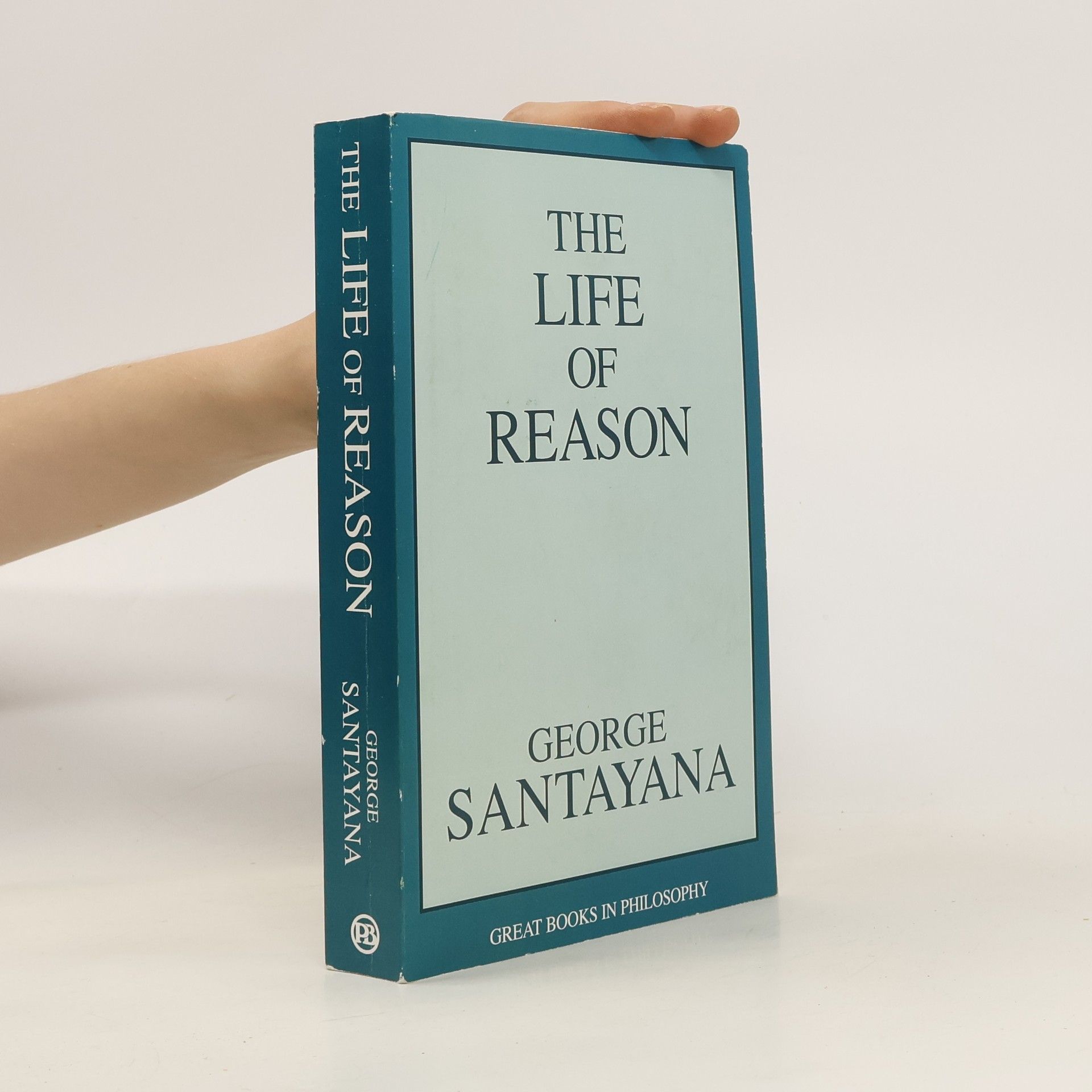The Life of Reason; or, The Phases of Human Progress
- 240pages
- 9 heures de lecture
George Santayana fut un philosophe, poète et critique littéraire dont l'œuvre anticipa des tournants intellectuels clés des deux côtés de l'Atlantique. Son naturalisme et son insistance sur l'imagination créatrice influencèrent fondamentalement la pensée moderne. Santayana explora de multiples perfections avant que le multiculturalisme ne devienne une question, et il conçut la philosophie comme de la littérature avant qu'elle ne devienne un thème dans les cercles universitaires. Il réussit à naturaliser le platonisme, à actualiser Aristote et à offrir une description sensible de la vie spirituelle sans croyance religieuse. Son héritage hispanique et son sentiment d'être un étranger en Amérique lui permirent de saisir des qualités de la vie américaine négligées par les initiés.






Przekład, wstęp i opracowanie – Adam Grzeliński i Krzysztof Wawrzonkowski Niniejsza rozprawa George’a Santayany (1863–1952), należącego do najważniejszych amerykańskich filozofów XX wieku, stanowi trzecią część cyklu The Life of Reason (1905–1906), jednego z dwóch, obok późniejszych Realms of Being (1927–1940), monumentalnych dzieł myśliciela. W kolejnych tomach składających się na Życie Rozumu Santayana śledzi stopniowe wyłanianie się refleksyjności, a przez to wzrastanie rozumności i obiektywizację przedmiotów ludzkich dążeń – ideałów w ustanawianiu świata codziennego doświadczenia, w racjonalnie funkcjonującej i opartej na zasadach prawa społeczności, w sztuce w symboliczny sposób ukazującej istotne kwestie ludzkiego życia, w postępie nauk, a wreszcie w religii. Zawarty w tomie opis religii ma dwojaki charakter. Po pierwsze Santayana spisuje w nim swoistą historię systemów religijnych, wyłanianie się politeizmu i jego przekształcenie w największe religie monoteistyczne. Pisze o judaizmie, religiach Indii, buddyzmie i islamie, choć najwięcej miejsca poświęca chrześcijaństwu i jego rozwojowi. Z drugiej, bardziej systematycznej strony analizuje religię jako samoistną i niesprowadzalną do innych, ludzką formację duchową oraz jej najważniejsze składowe. Są to: myślenie mityczne, pobożność, duchowość, miłosierdzie i wiara w życie przyszłe.
Wydane w roku 1896 Poczucie piękna jest pierwszą książką George'a Santayany, urodzonego w Hiszpanii amerykańskiego filozofa i literata. Praca ta, powstała na podstawie jego wykładów na Uniwersytecie Harvarda, zawiera prezentację najważniejszych problemów teorii piękna. Santayana omawia w niej i poddaje krytyce najważniejsze idee tradycyjnej estetyki, takie jak estetyczna bezinteresowność czy powszechność sądów smaku, antycypując przy tym zjawiska, które przyniesie dwudziesty wiek, takie jak dehumanizacja sztuki czy wieszczony niekiedy kryzys estetyki w ogóle. Sprzeciwiając się takim tendencjom, Santayana wskazuje na fundamentalną rolę, jaką przeżycie piękna pełni w życiu każdego człowieka. Poczucie piękna, pierwsza wydana po polsku praca Santayany, jest także przykładem jego talentu literackiego - to napisany lekkim piórem, precyzyjnie obmyślany wykład, który stanowi dobre wprowadzenie do estetyki filozoficznej.
The sixth book of the letters of American philosopher George Santayana, covering the years 1937 to 1940. číst celé
Influential philosopher, poet, and literary critic George Santayana (1863-1952) was a thorough naturalist, concerned with the ideal factors in human experience. He held that everything possesses a natural basis and that everything natural has an ideal development. In this one-volume edition of his early work, The Life of Reason (originally published 1905-6), Santayana argues that rational life is embodied in various ideal forms, including religion, and that religion may be embodied in reason. However, this is not to say that religion is grounded in science; rather, religion is poetic, a rendering of natural events in a dramatic form. Hence, to take so-called religious truths as literal claims is preposterous
Published in 1935, George Santayana's The Last Puritan was the American philosopher's only novel and it became an instant best- seller, immediately linked in its painful voyage of self-discovery to The Education of Henry Adams. It is essentially a novel of ideas expressed in the birth, life, and early death of Oliver Alden. In Oliver's case the puritanical self-destruction that prevented him from realizing his own spirituality is transcended by his attainment of the type of self-knowledge that Santayana recommends throughout his moral philosophy.The Last Puritan is volume four in a new critical edition of George Santayana's wroks that restores Santayana's original text and provides important new scholarly information. Books in this series - the first complete publication of Santayana's works - include an editorial apparatus with notes to the text (identifying persons, places, and ideas), textual commentary (including a description of the composition and publication history, along with a discussion of editorial methods and decisions), lists of variants and emendations, and line-end hyphenations.